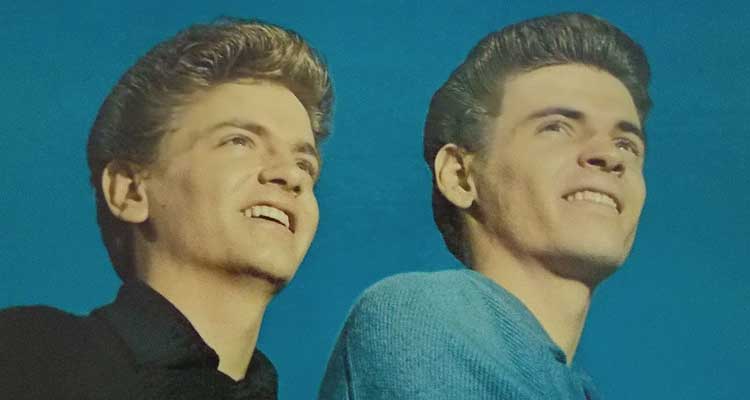The music of the 1950s and early ’60s remains strangely evocative. Sure, pop songs from that time may conjure up images of malt shops and sock hops, but there’s something ethereal, something otherworldly about, say, The Shangri-Las’ “Leader Of The Pack” or Roy Orbison’s “In Dreams.” (Dean Stockwell lip syncing to Roy Orbison’s “In Dreams” is a different beast entirely.) Then there’s The Everly Brothers‘ “All I Have To Do Is Dream.” It’s a song as, well, dreamy as its title. It’s the kind of song that’s both overly familiar and endlessly fascinating. Listen:
Less familiar, however, is Milwaukee’s surprising connection to the song.
Like many of The Everly’s biggest hits (“Bye Bye Love” and “Wake Up Little Susie” among them), “All I Have To Do Is Dream” was written by the workhorse husband-and-wife songwriting team of Felice and Boudleaux Bryant. Over the course of their decades-spanning career, the Bryants wrote more than 6,000 songs, with roughly 1,500 of them recorded by everyone from Buddy Holly and Tony Bennett to The Grateful Dead and Elvis Costello. Boudleaux Bryant was born in Georgia in 1920, and spent much of his twenties playing fiddle with the country western outfit Hank Penny And His Radio Cowboys. Felice, meanwhile, was born in 1925 at St. Mary’s Hospital in Milwaukee, and grew up on the east side of Humboldt Avenue.
The couple’s first meeting was one for the storybooks, and almost too good to be true: In 1945, Boudleaux and his band were playing a gig at Milwaukee’s Schroeder Hotel, now the Hilton Milwaukee City Center in downtown Milwaukee. Felice, then still known by her birth name Matilda Genevieve Scaduto, was working as an elevator operator at the Schroeder. She was 19 years old. She would later recall what happened next:
“Boudleaux was working in the cocktail lounge at the Schroeder and he was on the wagon, so he’d have to walk over to the water fountain by the elevator. I had dreamed of Boudleaux when I was 8 years old. When this man was walking toward me I recognized him right away. The only thing that was wrong was that he didn’t have a beard. Although he grew one for me later. In the dream we were dancing to our song. Only it was our song.”
Facial hair notwithstanding, the pair eloped two days later and were soon married. Matilda became Felice, a pet name courtesy of Boudleaux. The marriage, however, didn’t go over well with Felice’s family:
“The families were very upset. This was my second marriage. I’d been married earlier to a very nice boy from Wauwatosa—no, wait. Where’s the fair park? West Allis.”
Following some lean years filled with odd jobs, including a stint co-hosting a morning radio show in Green Bay (Felice: “I loved Green Bay, until the first snowfall. We were living in a trailer house and we knew it was never going to take a Wisconsin winter,”), the Bryants moved to Georgia, and then later Nashville, Tennessee, to begin their songwriting career full time. Three-hundred million sold copies of their songs later, they became country pop songwriting legends. Boudleaux died in 1987. Felice died in 2003.
As for “All I Have To Do Is Dream,” it was written by Boudleaux for Felice, and was inspired by her childhood premonition of him:
I need you so that I could die
I love you so and that is why
Whenever I want you, all I have to do is
Drea-ea-ea-ea-eam, dream, dream, dream
Drea-ea-ea-ea-eam, dream, dream, dream
The Everly Brothers recorded the song—live, in just two takes—in 1958. Today, “All I Have To Do Is Dream” stands as not only one of the greatest songs of all time (Rolling Stone placed it at 142 out of 500), but as a testament to a meeting in a Milwaukee hotel, long ago, preordained by a dream.

